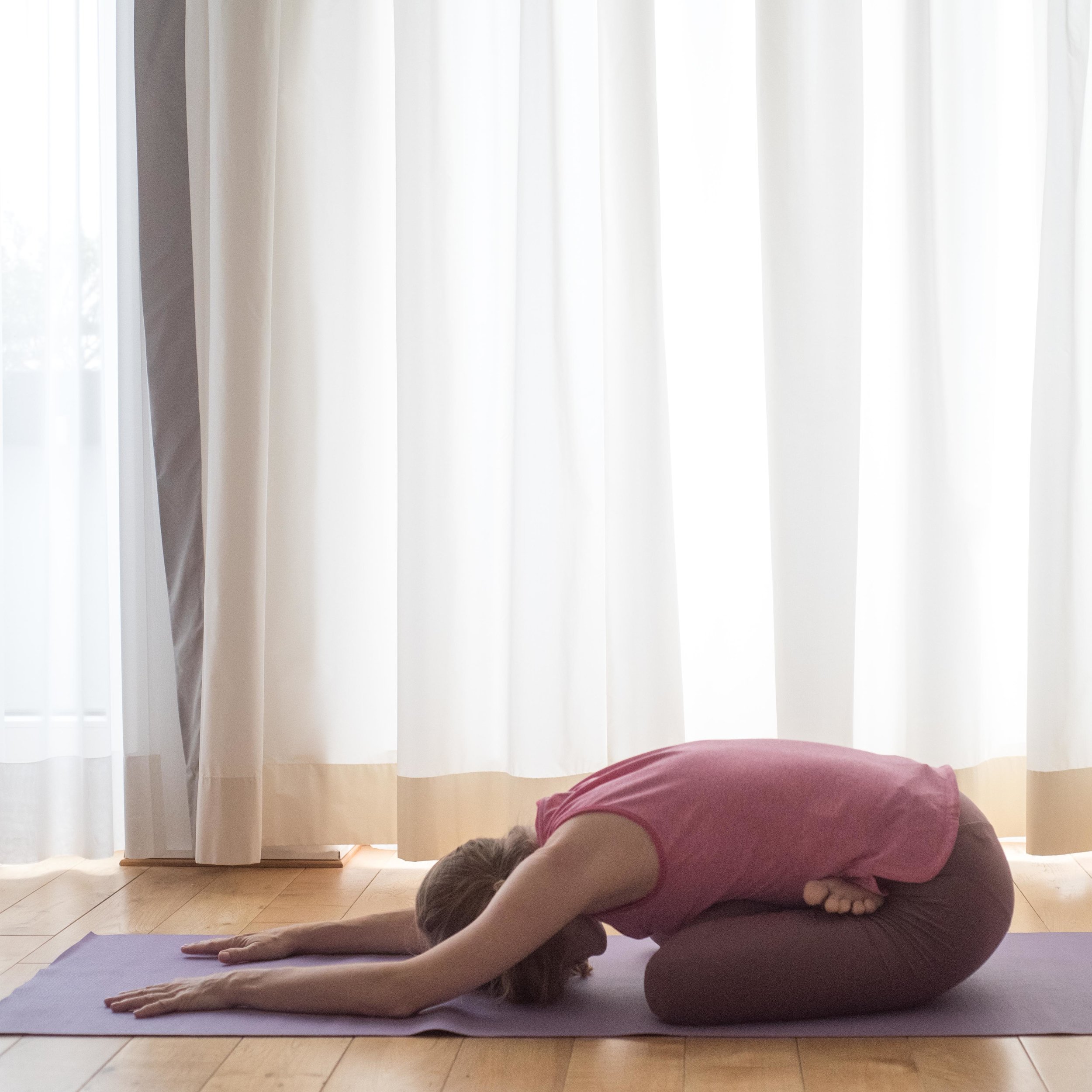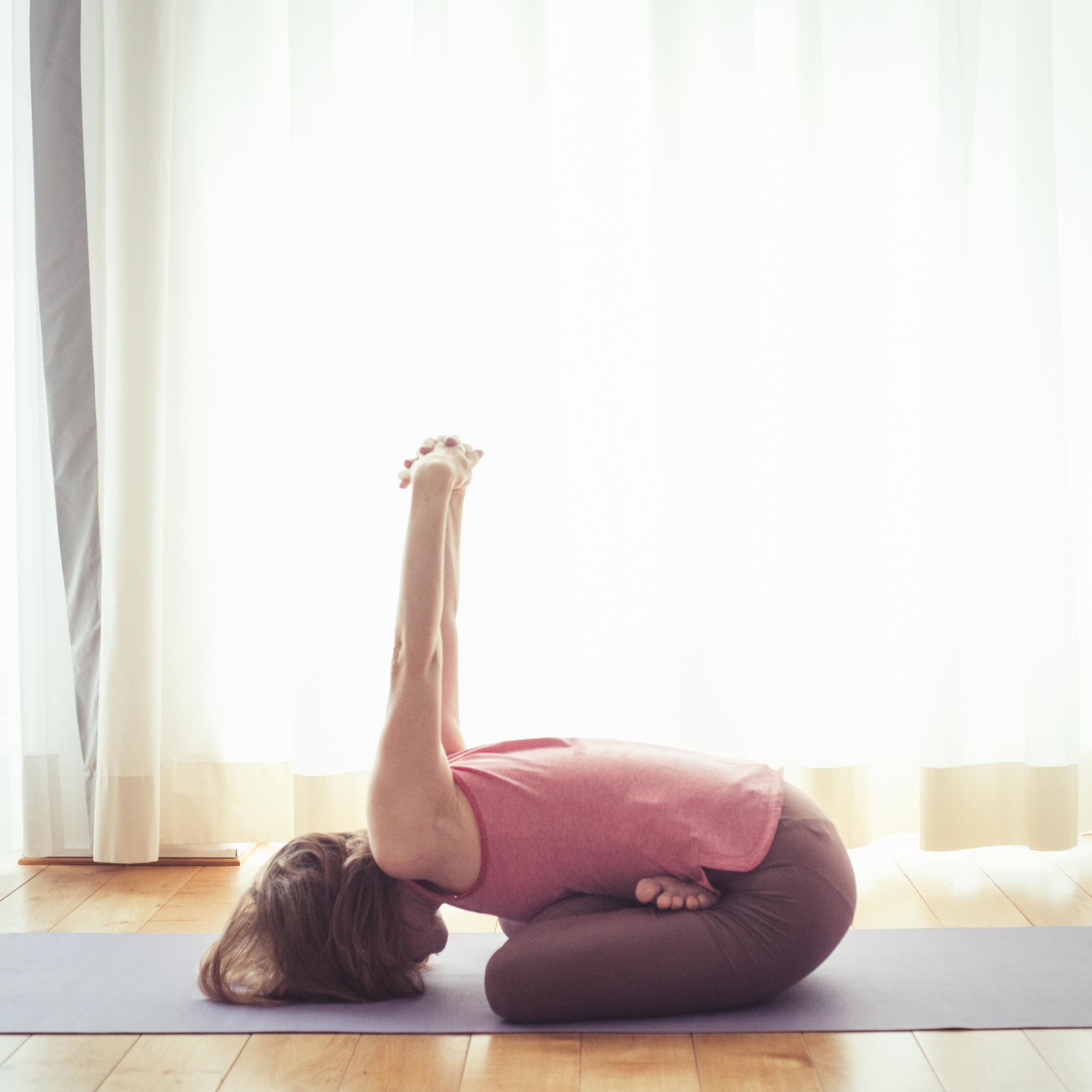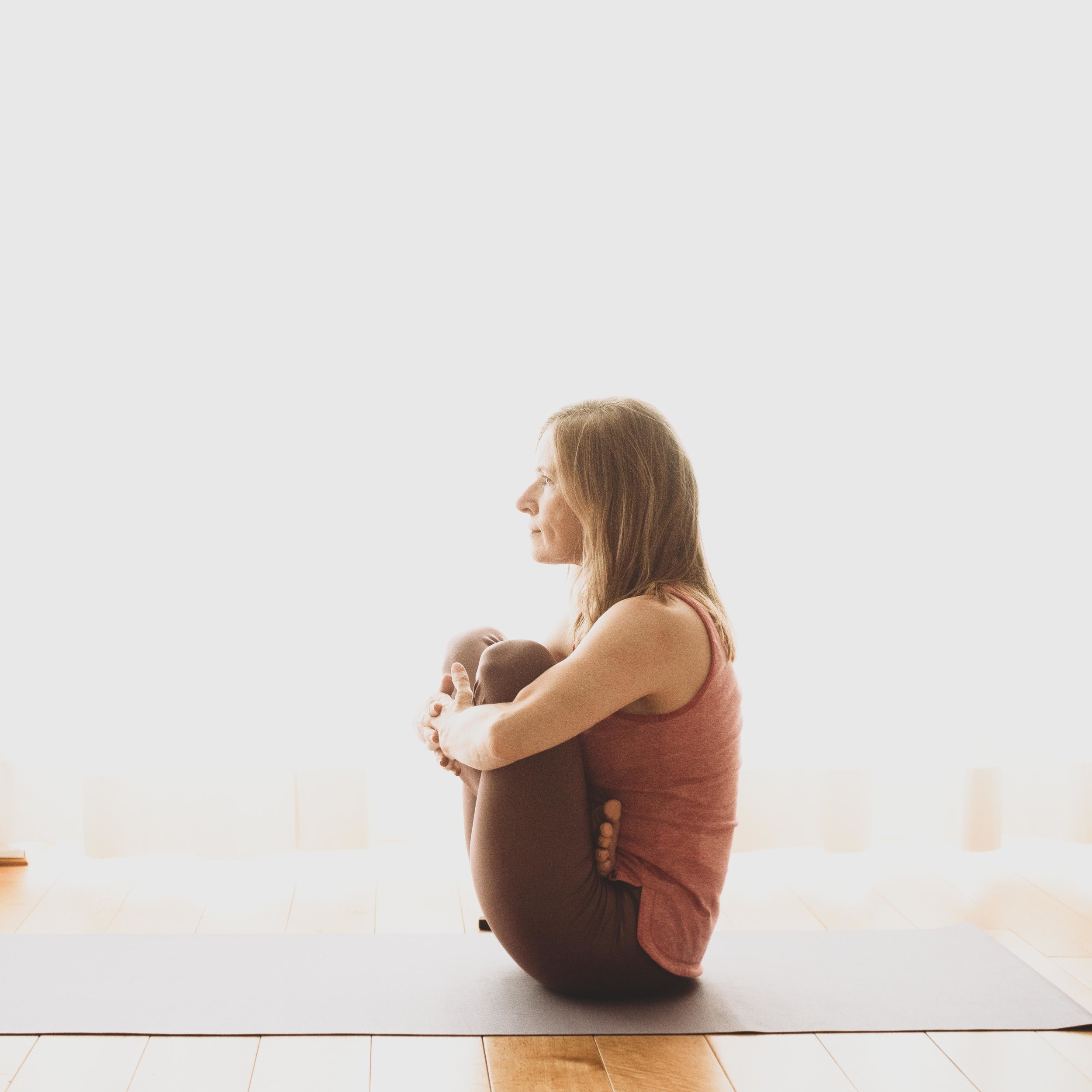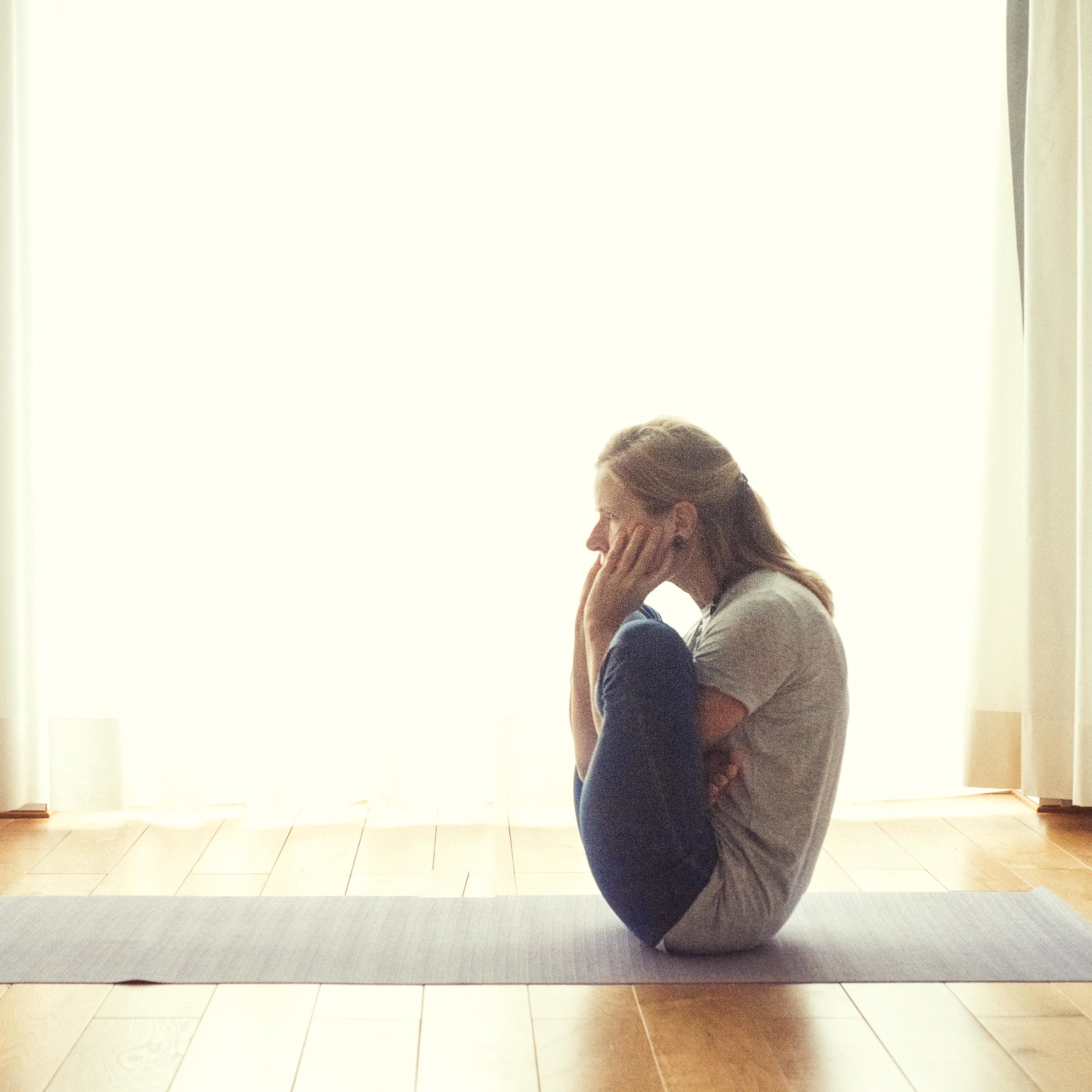Padmasana variations
Quick summary:
Half lotus pose gets introduced in the standing asanas (ardha baddha padmottanasana). In the middle part of primary come 2 poses with full lotus pose. Garbha pindasana has a dynamic phase and a static phase. The pose ends with Kukkutasana which has also a balancing aspect.
My topic these days is didactic. How can I learn an asana faster and safer. What are the tiny steps towards the end form. Do I need more flexibility or strength? Have I understood the technique to perform an asana? These are the questions. It makes sense to move from easier variations to more difficult ones. Easier variations always exist. Another reason for knowing easier variations is that it can happen that an asana is no more possible because of injuries. Instead of omitting an important asana, easier variation can do the job.
First I analyse the asana: Garbha pindasana requires to do lotus pose. It’s also a forward bending asana.
This is exactly what I did. I put my legs in lotus pose and bent forward. Gravity helps. When bending forward it’s important to stretch first. It helps to create length. The movement starts from the hips.
The second variations uses the arms as a leverage. This pose should be applied with much care. The shoulders are very sensitive joints.
The third variation is usually recommended in classes as an interim step toward garbha pindasana. It has a balancing aspect. In order to hold the pose it’s good advice to engage the hip muscles. The arms shall not do all the work.
The forth pictures is the most relaxing one. Lying on the back is always relaxing. With the arms one can support the movement. Finally a pose shall feel good.
Experimenting with variations deepens the understanding of the asanas.
It’s Tuesday today. I focus on back bending.
Garbha pindasana and Kukkutasana
Half lotus got introduced in the standing asanas with the pose ardha baddha padmottanasana. It shall prepare full lotus pose. The asanas are entangled with each other. In the middle part of the first Ashtanga yoga series comes an asana that requires that one is able to do full lotus pose. Not enough, one must somehow stretch the arms through the folded legs. Then comes a dynamic part, the rolling clockwise. Finally the pose ends in kukkutasana.
Garbha pindasana is one of the four core asanas of primary. The reason: Most yoginis struggle with this asana, that has three parts. The four core asanas of primary are the four most difficult asanas for most students who struggle their way through this first series.
I love the Ashtanga yoga series. I also know that in order to practice intelligently one must practice sometimes other asanas than given. It might make sense to practice first easier asanas in order to master the more difficult ones faster and without injuries. First one must be familiar with lotus pose before one is able to do garbha pindasana. My opinion is that it’s not necessary to stop here if one is not able to perform this asana perfectly. It will come with time.
More asanas that integrate lotus pose come in the closing sequence. Only the last three asanas are rather classic.
Lotus pose is a basic asana, it’s worth learning it. It’s THE pose for pranayama and meditation. Also in the second series comes an asana with lotus pose (supta vajrasana), so in the third series (urdhva kukkutasana A, B and C) and also in the forth series (punga kukkutasana) .
I learned padmasana in front of the TV. I sat in that position. When it start hurting, I changed legs. One must take care of the knees. Too much ambition is not recommended. A daily dose of padmasana can do miracles.
I change legs. During 2 years I followed the rule ‘right leg first’. After these 2 years my body was imbalanced. At home I can practice what I consider good for me. On Mondays, Wednesdays and Fridays I take the right leg first. On Tuesdays, Thursdays and Sundays I take the left leg first. I always want to exercise the right side and the left side of my body evenly. As a right-hander my right side is stronger, my left side is more flexible, not much but it’s remarkable.
Beside the asanas with lotus pose that are exercised in Ashtanga yoga, there are much more asanas with lotus pose that are worth trying. I’ll surely take pictures…….enough for today.






